



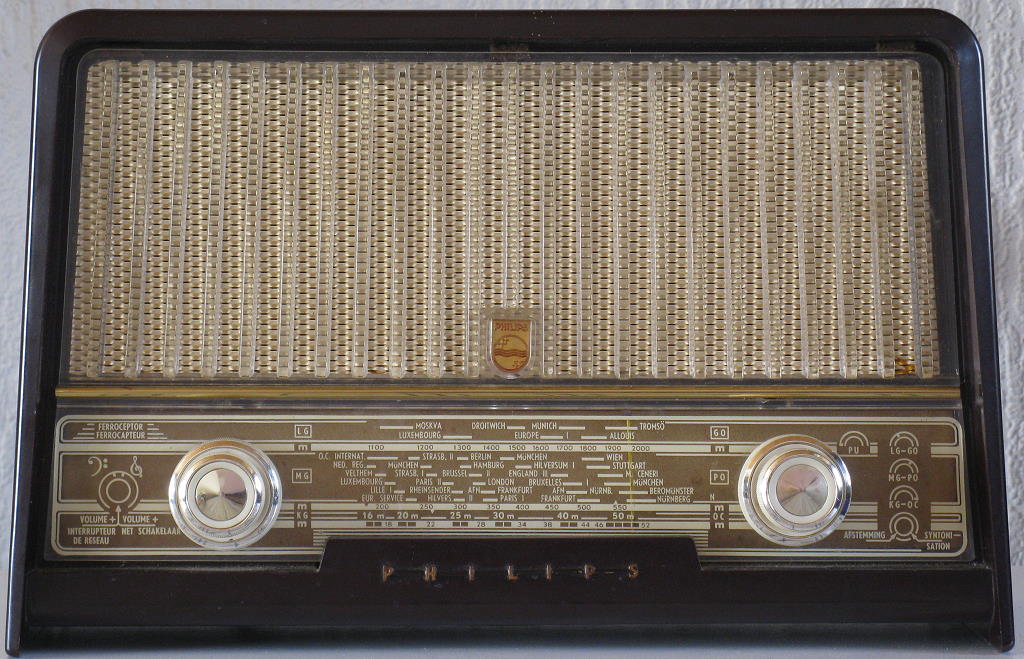 1956
1956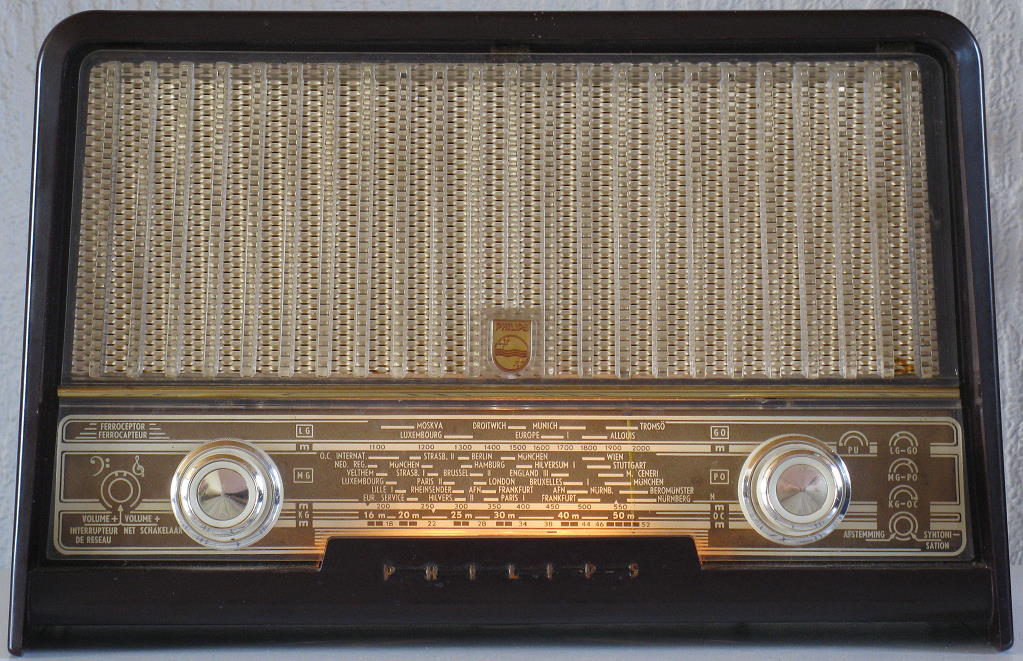 1956
1956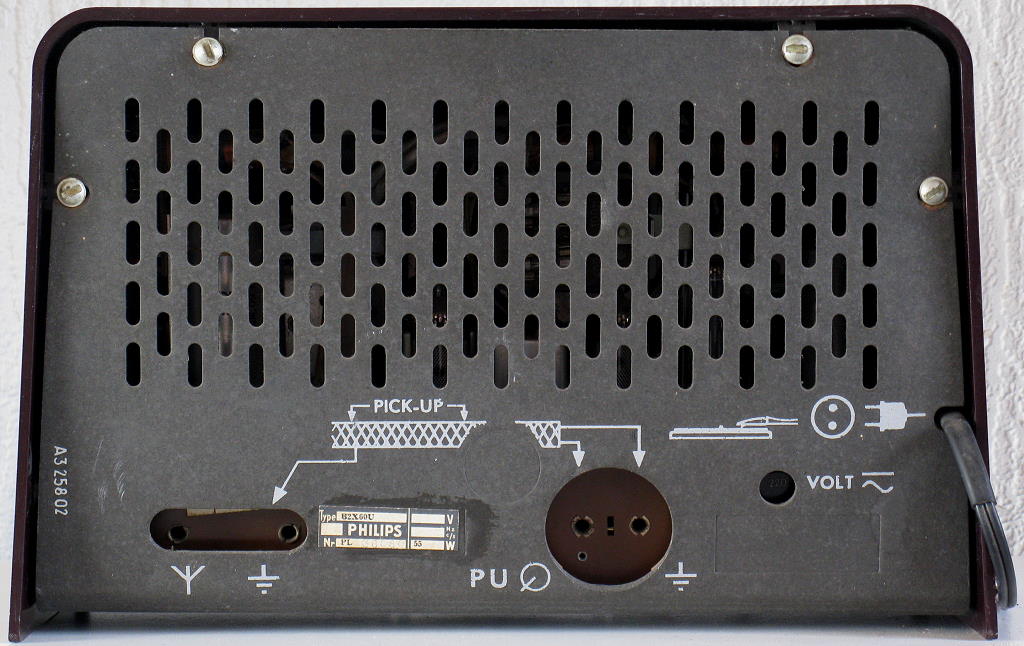 1956
1956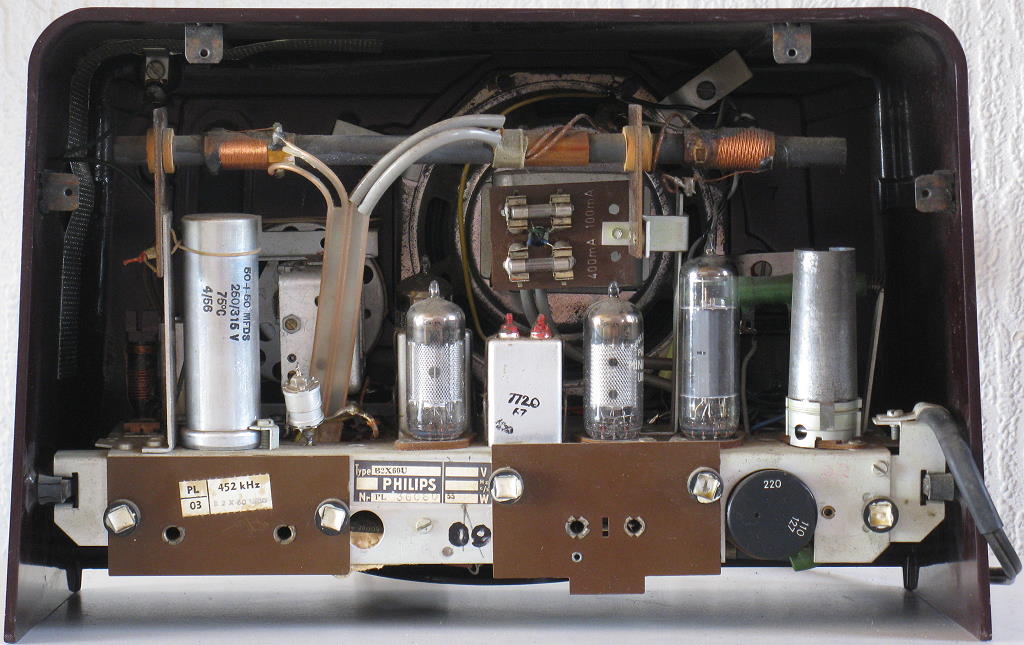 1956
1956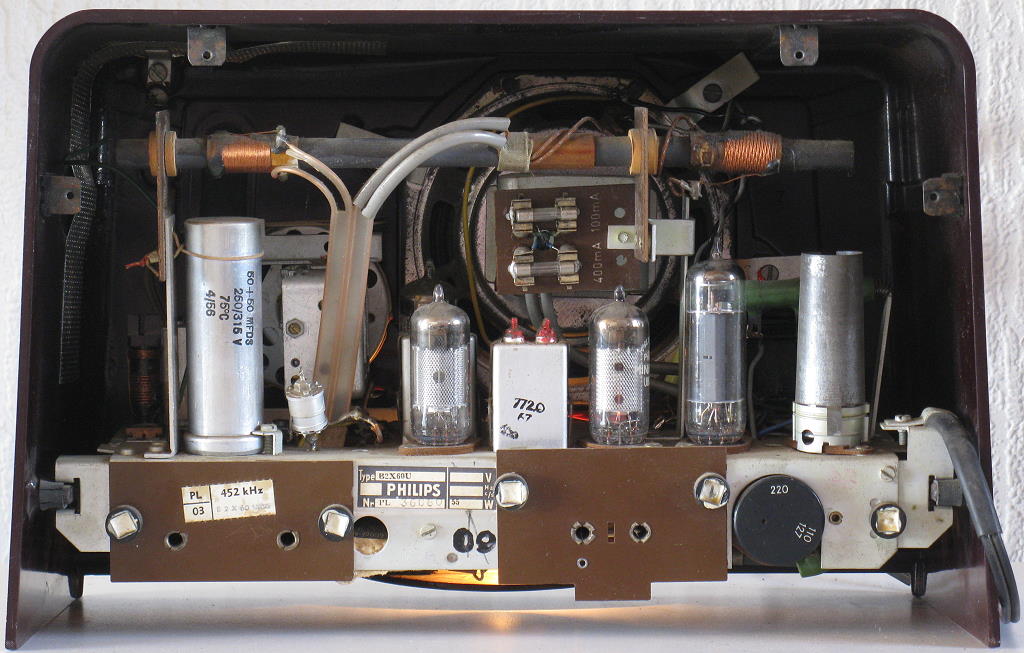 1956
1956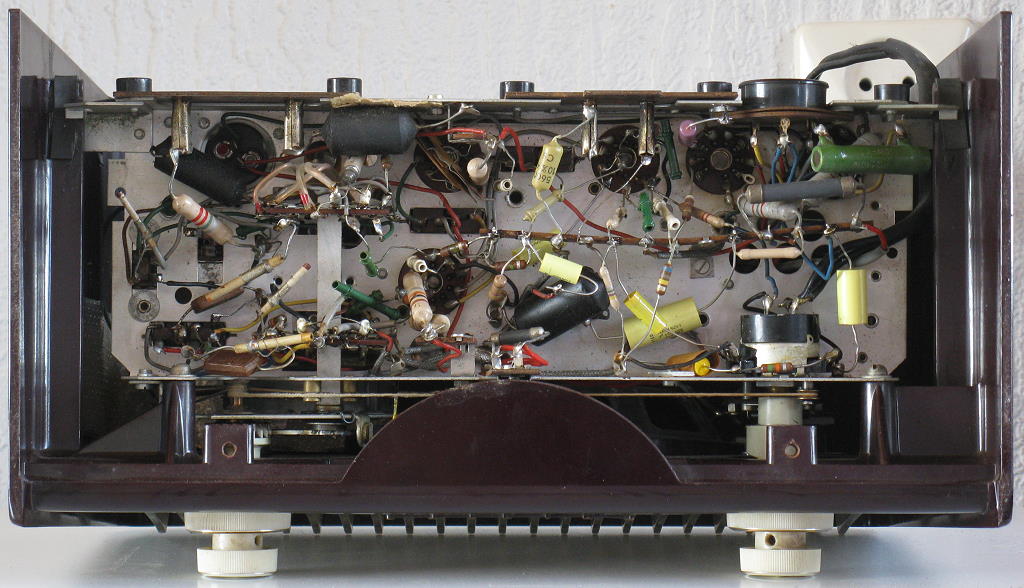 1956
1956 |
Cabinet: | 90% |
 |
Reception AM: | 90% |
 |
Sound Quality AM: | 70% |
 |
Sound Quality P.U.: | ? |
 |
P.U. Entrance: | Yes |
 |
Tape Recorder Entrance: | No |
 |
Extra Loudspeaker Output: | No |
 |
Loudness: | Yes, bass |
 |
Treble Control: | Yes, switchable |
 |
Bass Control: | No |
 |
Tone Register Switches: | No |
 |
AM Bandwidth Switch or Control: | No |
 |
Tuning Indicator: | No |
 |
Build-in Antenna: | Yes, SW plate antenna |
 |
Build in Ferrite or Window Antenna: | Yes, MW and LW ferrite antenna |
 |
Tubes: | UCH81, UF89, UBC81, UL84, UY42. |
 |
Wave Bands: | LW, MW and KW from 16 - 50 meters |
 |
Intermediate Frequencies (IF): | 452 kHz |
 |
Loudspeaker: | AD 3500 X |
 |
Resonance Frequency Fs: | ? |
 |
Frequency Range Power Amplifier: | ? |
 |
RMS Output Power at 5 Ohms: | ? |
 |
Cabinet: | Bake-lite, dark brown. |
 |
Dimensions: | 32.5 x 19.5 x 18.5 cm |
 |
Mains Power Voltages: | 110, 127, 220 Volts~ |
 |
Mains Power Consumption | 55 Watts |
 |
Retail Price | ? |
 Home
Home Back
to Picture Gallery 3
Back
to Picture Gallery 3 Contact
Kees van Dijke
Contact
Kees van Dijke Download
the schematic diagram
Download
the schematic diagram